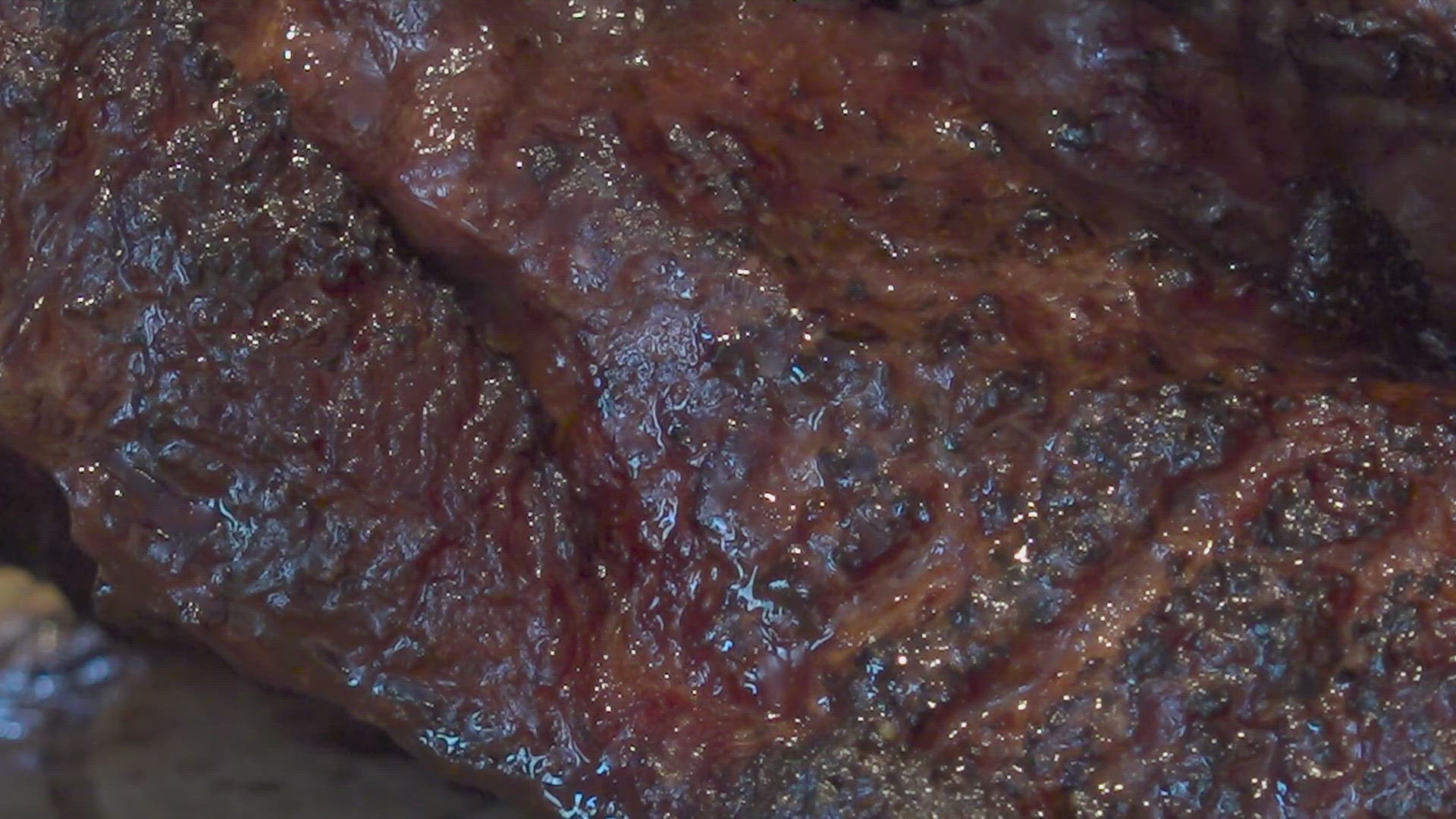DALLAS — As an associate professor of chemistry and biochemistry at UT Dallas, Jeremiah Gassensmith has performed plenty of important research.
But few things are as important to Texans as his latest project: barbecue.
“It comes down to understanding the science, so, you can do better at perfecting your technique,” Gassensmith said.
For the good of science, and carnivorous Texans everywhere, last spring Dr. Gassensmith taught an honors class about barbecue and shared the science behind smoking a great brisket.
As meat lovers likely already know, temperature is vital. It’s what will make or break down collagen. Gassensmith said collagen may be the single biggest factor in smoking a quality brisket.
“Collagen can be your friend or your enemy,” Gassensmith said. “Collagen will melt at 160 degrees Fahrenheit.”
Dr. Gassensmith said collagen is not the same as fat. Like collagen, fat breaks down and melts when introduced to heat. However, fat has a lot to do with flavor while collagen controls texture.
Collagen is a protein that’s wound together like strands of yarn.
However, if brisket doesn’t reach 160 degrees the collagen won’t unwind and the brisket will be chewy. If the temperature gets too hot, the collagen will wind tighter and the brisket will be too dry.
That’s why "low and slow" is many a pitmaster’s motto, but temperature isn’t the only thing affecting collagen.
“One of the reasons we put salt on the beef is the salt will start to enter the meat and that high salt content actually helps the collagen unwind a little,” Gassensmith added.
When collagen unwinds, the meat gets moist.
Once collagen is unwound, some of that protein will rise to the surface.
“It actually creates a woven matrix with your spices, like your pepper and stuff, and that actually helps create the bark,” Gassensmith said.
To achieve a bark that’s as good as its bite, just add water. That’s because smoke nanoparticles are too big to penetrate brisket.
Rather, smoke just sticks to the surface. Those smoke particles stick best (i.e. creating a smoke ring) with water-based liquids.
If someone makes it that far, it’s time to wrap it up. Wrapping a brisket in either butcher paper or aluminum foil, sometimes called a "Texas crutch," helps retain moisture while the middle of the brisket finishes cooking.
Gassensmith points out, however, that wrapping a brisket does not help the meat reabsorb any juices.
“If you expect it to reabsorb juices, that’s not gonna happen,” he said. “If you expect it to continue to cook to help melt the collagen and render the fat, that will happen. And that will help.”
Once a brisket has been wrapped, it’s just a matter of waiting until the internal temperature has reached the desired doneness.
Nail the science and perfect brisket is the result every time, right?
“No,” Gassensmith laughed. “I suspect it’ll be forever before I’m actually really good.”
Largely because Gassensmith said smoking meat is a science and an art. It’s one thing to nail the science, but to flawlessly execute every other factor in barbecue is extremely difficult.
“The biggest ingredient is patience,” Gassensmith said. “And being willing to eat a bunch of crap before you get into the good stuff.”
More importantly, Gassensmith said sharing those mistakes with friends and family, on days like July 4, is what makes barbecue a uniquely Texan experience.
“That is my favorite part actually, is the community,” Gassensmith said. “And, of course, eating. Cause I like to eat.”

